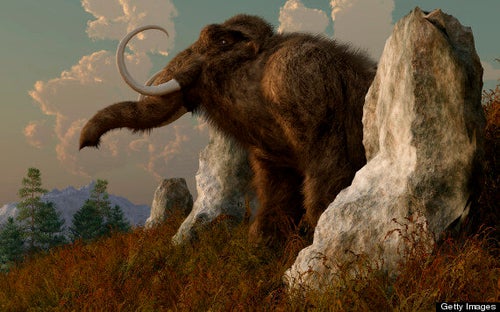An archaeologist has warned that ethical issues surrounding bringing extinct animals back to life must be considered because scientists are “on the brink” of doing so.
Citing recent advances in the field, Dr Alice Roberts warned that while resurrecting the woolly mammoth may be a possibility, the moral consequences must be examined.
She told the Radio Times magazine: “Scientists have already extracted the bone marrow from woolly mammoth remains found in Siberia to look at the DNA with a view to resurrecting a mammoth.


Dr Alice Roberts warns the moral consequences of resurrecting a woolly mammoth must be examined
“It is within our grasp, which is such an extraordinary thing to think about.”
But Dr Roberts, who is a professor of public engagement in science at the University of Birmingham, described the prospect of bringing back a single mammoth as “really questionable”.
She added: “Mammoths are herd animals and their environment no longer exists, so what are you bringing the animal back for? You’re bringing it back to live in a zoo? I think the ethics are very questionable.”
In March last year Russian and South Korean scientists teamed up with the aim of cloning tissue from the thawed remains of a woolly mammoth found in Siberia’s permafrost.
The ambitious project will try to create a living specimen using the DNA-storing nucleus of a mammoth cell and an Asian elephant egg. To date, no one has ever been able to harvest eggs from an elephant.
Biologists briefly brought the extinct Pyrenean ibex back to life in 2003 by creating a clone from a frozen tissue sample harvested before the goat's entire population vanished in 2000.
The clone survived just seven minutes after birth, but it gave scientists hope that "de-extinction," once a pipedream, could become a reality.
SEE ALSO:
But Stuart Pimm of Duke University argues in an opinion piece in National Geographic that these efforts would be a “colossal waste”; if scientists don't know where to put revived species that had been driven off the planet because their habitats became unsafe.
"A resurrected Pyrenean ibex will need a safe home,” Pimm wrote. “Those of us who attempt to reintroduce zoo-bred species that have gone extinct in the wild have one question at the top of our list: Where do we put them? Hunters ate this wild goat to extinction. Reintroduce a resurrected ibex to the area where it belongs and it will become the most expensive cabrito ever eaten.”
Pimm also worries that de-extinction could create a false impression that science can save endangered species, turning the focus away from conservation.
What do you think?